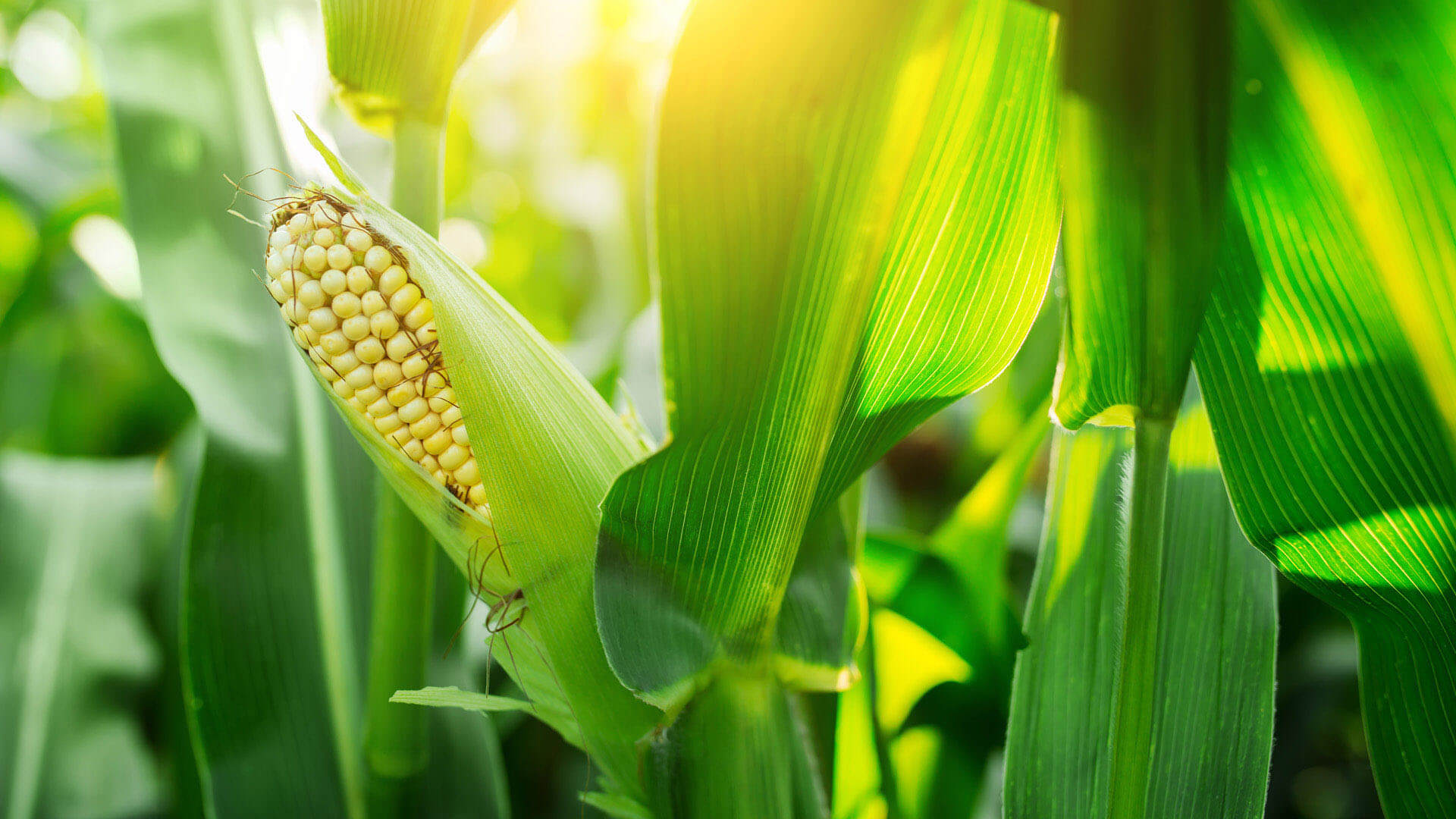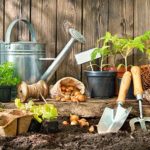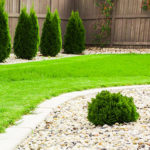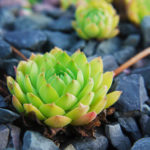
What you get out of planting a vegetable garden
Head out to the garden and pick your food before dinner, instead of wandering through narrow supermarket aisles and waiting in line at the checkout for ages. It sounds too good to be true, but by planting a vegetable garden, it’s not a problem anymore.
Many people dream of planting a vegetable garden. However, they shy away from it because they associate a vegetable garden with a lot of work. In the following article we will show you that this is not true and that with a few steps, good planning and a few minutes of work a day you can have a sprouting vegetable garden in no time.
Having your own vegetable garden comes with many benefits. You get a much closer relationship with nature and food as you watch your vegetables grow. Plus, you regain control over your food and can be sure that the vegetables don’t contain any contaminants. Many people see the maintenance required as a major drawback to vegetable gardens. However, the daily work in the fresh air can be a very good relaxation ritual from the stress of everyday life and give you new strength.
Procedure for planting a vegetable garden
The first steps
The very first thing to do is to determine the location and size of the beds. To get faster yields, you should definitely place your vegetable garden in the sun. In addition, the bed should not be wider than 1.30 meters, otherwise you will not be able to comfortably reach the center of the bed from both sides. In order to be able to walk comfortably between the beds, a minimum distance of 30cm should be maintained between the individual beds. The main path of the vegetable garden should not be narrower than 100cm, otherwise it will be difficult to place a wheelbarrow there.
Planning the vegetable garden
Before you start growing vegetables, you should make a detailed plan of what vegetables you want to grow and how much area each species will get. Then divide this list into 2 groups. In one group there will be vegetables with a very long growing season – the so-called main crop. These include, for example, potatoes, carrots, cucumbers or sweet corn. In the other group comes the vegetables with short growth time, also called pre- or post-culture. For example, spinach, bush beans or lamb’s lettuce have a short growing season. Then each main crop is combined with a pre- or post-crop. This means that either the preceding crop is grown first and then the main crop in the same place, or the main crop is grown first and then the succeeding crop. This approach will make the best use of the available area and you will get much more yield.
Prepare the soil
When all the planning is done, you are already a big step closer to your own vegetable garden. Now you need to prepare the soil of the bed before sowing. Old and solid soil should be loosened with a spade and then smoothed with a rake. After that, it is advisable to mix compost into the soil, as it contains important nutrients and stimulates the growth of the plants. If you don’t have compost available, simply buy fertilizer and work it into the soil of your vegetable garden according to package instructions. Then you can finally start sowing the seeds. In order to have real success with your vegetable garden, make sure to use only fresh, high-quality seeds from reputable manufacturers. After sowing, you should water each bed once a week with about 20 liters per square meter. In addition, you should make a plan, in which you enter all sowing dates, so that you do not forget any harvest date.
Vegetable garden with crop rotation
If the same type of vegetable is always grown in one place, the soil may be deprived of too many nutrients and become deficient over the years. In addition, such lopsided planting can lead to harmful fungi and soil fatigue. To protect your vegetable garden from such dangers, you should rotate crops annually and not grow plants from the same family in the same area every year. Especially for plants such as beans, peas, fennel, early potatoes, cucumbers, cabbage, carrots, parsley, leeks, spinach or onions, annual site rotation is very important.
Vegetable garden with mixed culture
In many vegetable gardens, grows per bed always only one type of vegetable. However, over the years it has been shown that it makes more sense to plant different types of vegetables in rows in the same bed. This avoids plants of the same species competing too much with each other and taking too many nutrients from the soil. In addition, there are some plants that protect each other from pests. For example, carrots and onions, kohlrabi and lamb’s lettuce, or peppers and tomatoes are considered very good partners. A mixed-crop table can tell you which plants you should plant side by side and which you’d rather not.
Different types of vegetables
The many different types of vegetables can seem very confusing at first glance. However, with the following classification, you will no longer have a problem choosing the right vegetables for your vegetable garden. First of all, vegetables can be roughly divided into leafy vegetables, flowering and budding vegetables, fruiting vegetables, legumes, cabbage vegetables, root vegetables and onion vegetables. In addition, there are some requirements that apply to each type of vegetable. For example, each garden vegetable requires a permeable site soil, sun and water.
Leafy and stem vegetables
Leafy and stem vegetables use plant leaves and stems instead of roots or fruits. Leafy vegetables are loved by slugs, so you should always surround them with a suitable slug fence. Examples of leafy and stem vegetables include wild garlic, nettles, spinach, and asparagus.
Flowering and budding vegetables
Flowering and budding vegetables grow best in heavy, nutrient-rich soils, as this allows their inflorescences to develop best. In addition, the vegetable needs a lot of water. Examples of flowering and budding vegetables include artichoke, cauliflower, broccoli, squash blossom and romanesco.
Fruiting Vegetables & Legumes
Fruiting vegetables are probably the most popular and species-rich vegetables. They usually require a lot of light and heat, as many fruiting vegetables originate from warmer countries. Examples of fruiting vegetables include eggplant, chili, cucumber, lentils, peppers, tomato and zucchini.
Cabbage Vegetables
Cabbage vegetables require extremely high levels of nutrients and liquid and are considered rather demanding. On the other hand, they have the advantage that they can be stored for a long time without going bad. Cabbage vegetables include, for example, cauliflower, kale, Brussels sprouts, pointed cabbage, white cabbage and savoy cabbage.
Root vegetables
Root vegetables consist of edible plant roots that grow underground, often called turnips or tubers. Root vegetables also require a lot of nutrients and store very well. Root vegetables include, for example, carrots, radishes, beets, parsnips and radishes.
Onion vegetables
Subterranean plant parts of allium plants that can be eaten as vegetables are called onion vegetables. Onion vegetables should be sown in a sunny place and then stored in a dry and dark place. Onion vegetables include onions and garlic, for example.
What else do I need for a vegetable garden?
To make planting your vegetable garden easier, you should acquire some utensils. Below you will find a checklist of what you should have before you start building your vegetable garden.
As described earlier, fertilizing is very important to provide nutrients to the plants. You should always make sure to use organic fertilizer so as not to reduce the quality of the vegetables and not to harm the environment unnecessarily. In most cases, you should not use self-harvested seeds, as there is a considerable loss of quality associated with most new seeds. Furthermore, you will need a watering can to water the beds, a spade to loosen solid soil and a rake to straighten the soil. In addition, it would be beneficial if you have a rain barrel, as you will save a lot of water when watering the vegetables (for the tech-savvy with an irrigation computer). If you’re tilling your garden in the summer, don’t forget appropriate sun protection like a hat, sunscreen and umbrella
.










